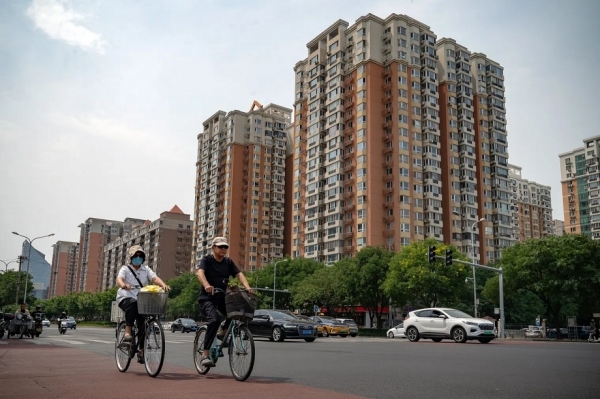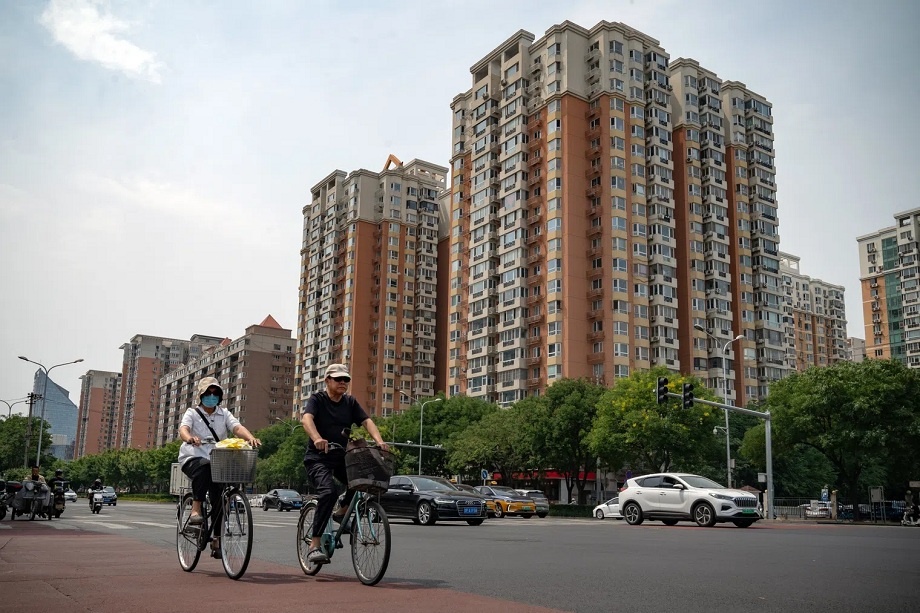Các nhà kinh tế thúc giục Trung Quốc tăng cường

![]()
 Suy thoái bất động sản kéo dài là thách thức lớn nhất mà nền kinh tế Trung Quốc đang phải đối mặt. (Ảnh: Bloomberg) Suy thoái bất động sản kéo dài là thách thức lớn nhất mà nền kinh tế Trung Quốc đang phải đối mặt. (Ảnh: Bloomberg) |
Trong số các giải pháp được 15 nhà phân tích đề cập đến trong một cuộc khảo sát của Bloomberg, việc thực thi mạnh mẽ hơn các gói cứu trợ là lựa chọn của phần lớn những người được khảo sát. Cuộc thăm dò diễn ra sau khi dữ liệu kinh tế tháng 8 được công bố làm gia tăng nghi ngờ về việc liệu nền kinh tế có đạt được mục tiêu tăng trưởng hàng năm của Bắc Kinh hay không.
“Cần phải thay đổi hoàn toàn tư duy để phá vỡ vòng xoáy giảm phát”, Raymond Yeung, nhà kinh tế trưởng của Greater China tại Australia & New Zealand Banking Group, cho biết. “Cần nới lỏng mạnh mẽ, tránh để GDP suy giảm”.
Sự suy thoái bất động sản kéo dài nhiều năm gây thiệt hại khoảng 18 nghìn tỷ USD, là thách thức lớn nhất mà nền kinh tế Trung Quốc phải đối mặt. Nó đã khiến hàng triệu việc làm mất đi, đánh mất niềm tin của người tiêu dùng và làm giảm nhu cầu đối với các sản phẩm như thép.
Tuy nhiên, 4 tháng sau khi Trung Quốc công bố nỗ lực lớn nhất nhằm phục hồi thị trường bất động sản, tiến độ thực hiện các kế hoạch, bao gồm gói cứu trợ 300 tỷ nhân dân tệ từ nguồn vốn của ngân hàng trung ương để giúp các công ty được nhà nước hậu thuẫn mua lại những ngôi nhà chưa bán được từ các chủ đầu tư, vẫn diễn ra chậm chạp.
Được đưa ra để giảm tình trạng dư thừa bất động sản, con số này còn kém xa so với 1 – 5 nghìn tỷ nhân dân tệ mà một số nhà phân tích cho rằng cần thiết cho một giải pháp quyết liệt hơn. Kế hoạch này được đánh giá kém hấp dẫn đối với chính quyền các địa phương, chỉ có 29 địa phương phản ứng với yêu cầu giải cứu bất động dư thừa, chiếm một phần nhỏ trong số hơn 200 địa phương được chính phủ yêu cầu hành động.
Trung Quốc đã bác bỏ đề xuất hỗ trợ gần 1 nghìn tỷ USD, do Quỹ Tiền tệ Quốc tế (IMF) đưa ra, về việc sử dụng ngân sách trung ương để hoàn thiện các dự án nhà ở đang dang dở trên quy mô lớn, cho rằng đây là kế hoạch mạo hiểm và quá tốn kém.
Chính phủ Trung Quốc không muốn mở rộng mức trợ cấp hơn nữa đối với bất động sản, một phần là do Bắc Kinh quyết tâm chuyển động lực tăng trưởng kinh tế từ bất động sản sang công nghệ và sản xuất. Chính phủ đã thúc giục các ngân hàng cho các nhà sản xuất vay vốn, đồng thời ngừng cho vay đối với các dự án bất động sản.
Nếu không có một đợt kích thích kinh tế, nền kinh tế Trung Quốc dự kiến sẽ tăng trưởng 4,8% trong năm nay, theo dự báo của các nhà kinh tế trong cuộc khảo sát, thấp hơn mục tiêu của chính phủ. Nhưng tăng trưởng danh nghĩa, có tính đến tác động của giá cả giảm, có khả năng sẽ thấp hơn nhiều ở mức 4,25%, các chuyên gia kinh tế ước tính.
Cuộc khảo sát cho thấy các biện pháp khác ngoài giải cứu bất động sản có thể sẽ kém hiệu quả hơn trong việc thúc đẩy nền kinh tế. Trong khi đó, 8 nhà kinh tế trong cuộc khảo sát dự đoán tình trạng ảm đạm của thị trường bất động sản Trung Quốc sẽ kéo dài thêm 2-5 năm nữa.
Chính phủ Trung Quốc đang cân nhắc nhiều giải pháp khác nhau để củng cố thị trường bất động sản. Bao gồm cho phép chính quyền địa phương mua nhà chưa bán bằng tiền huy động từ phát hành trái phiếu đặc biệt, giảm lãi suất thế chấp và xóa bỏ một số rào cản mua nhà đối với người tiêu dùng.
Các quan chức địa phương tỏ ra thận trọng vì giá bất động sản dự kiến sẽ tiếp tục giảm, trong khi lợi nhuận ước tính từ việc chuyển đổi bất động tồn kho thành nhà cho thuê giá rẻ thấp hơn lãi suất huy động.
Dấu hiệu cho thấy việc triển khai chậm chạp kế hoạch giải cứu đã không thể ngăn chặn được suy thoái, giá nhà mới tại Trung Quốc đã giảm 0,73% vào tháng trước so với tháng 7, mức giảm lớn nhất kể từ năm 2014.
Đầu tư bất động sản tiếp tục giảm ở mức hai con số, trong khi tiêu dùng suy yếu hơn dự kiến và sản xuất suy giảm kéo dài nhất kể từ năm 2021.
D.Q Bloomberg
Theo kinhtexaydung.petrotimes.vn Copy







